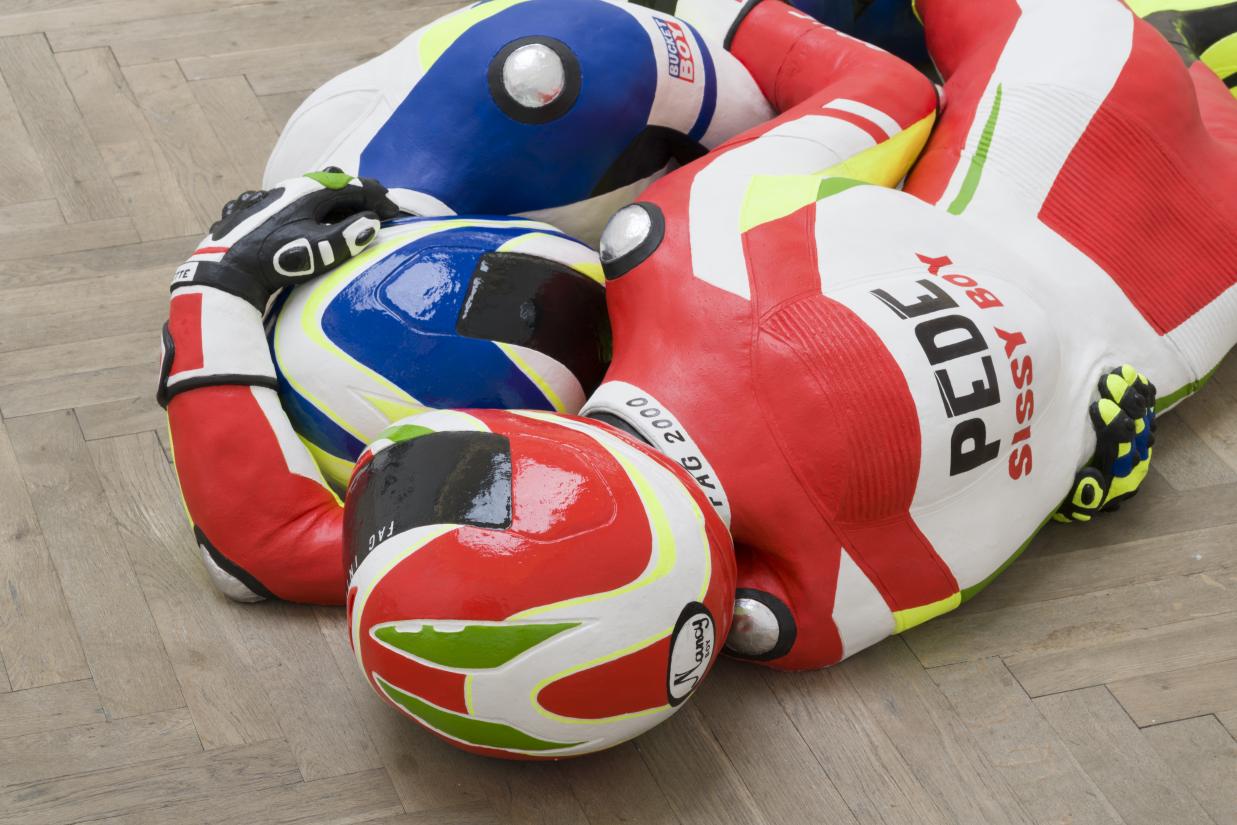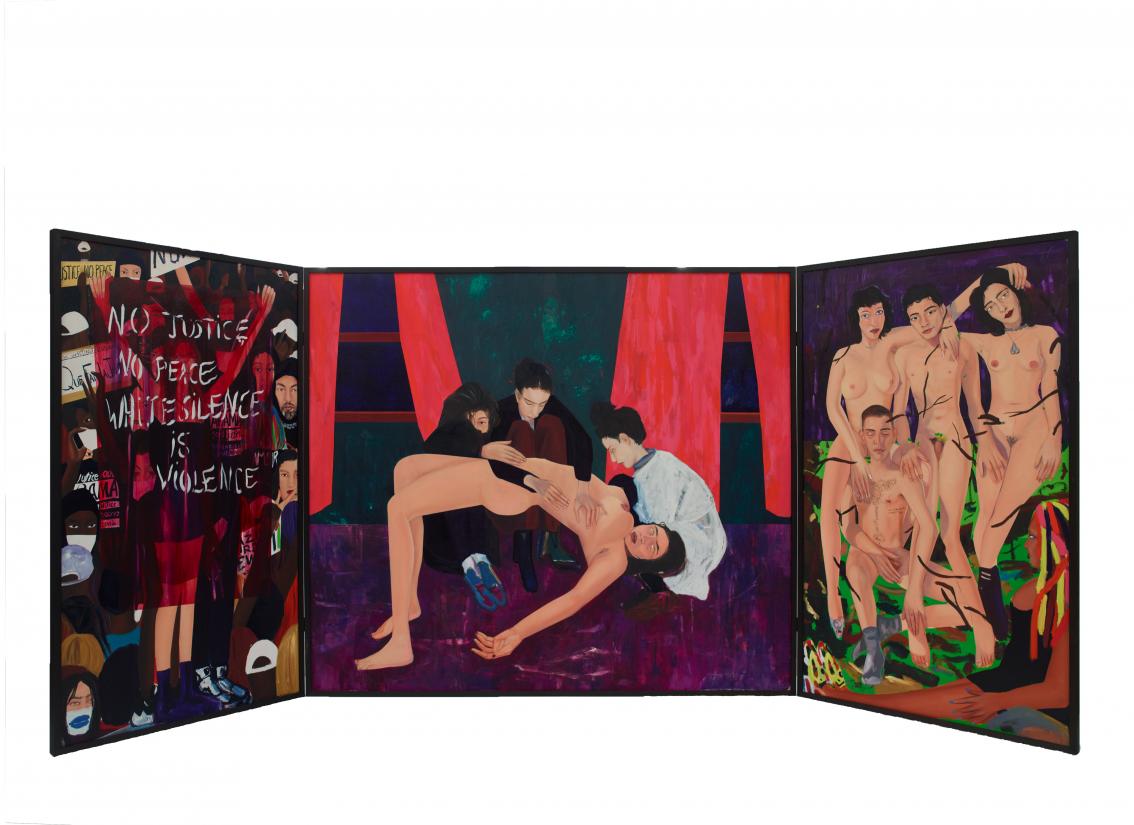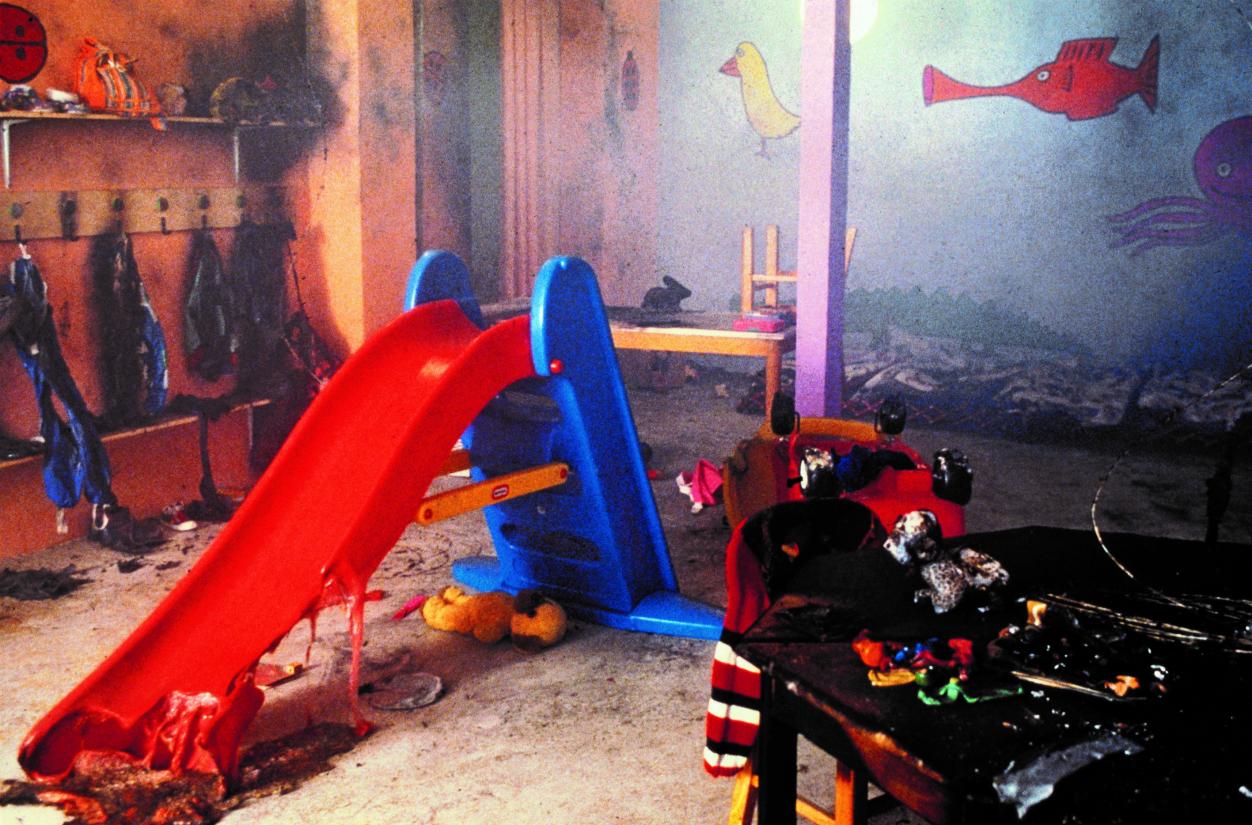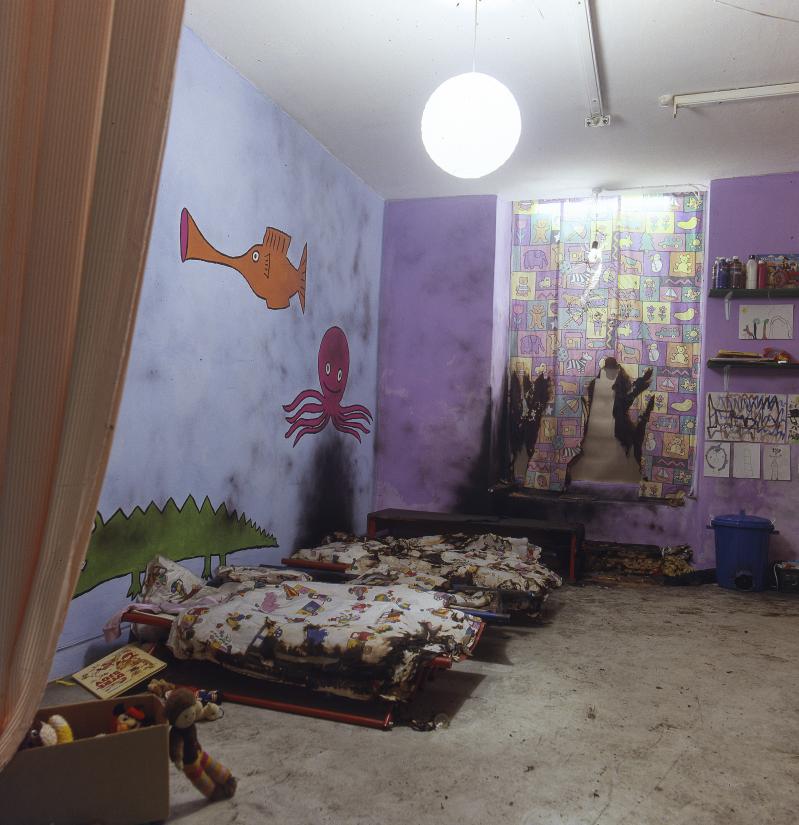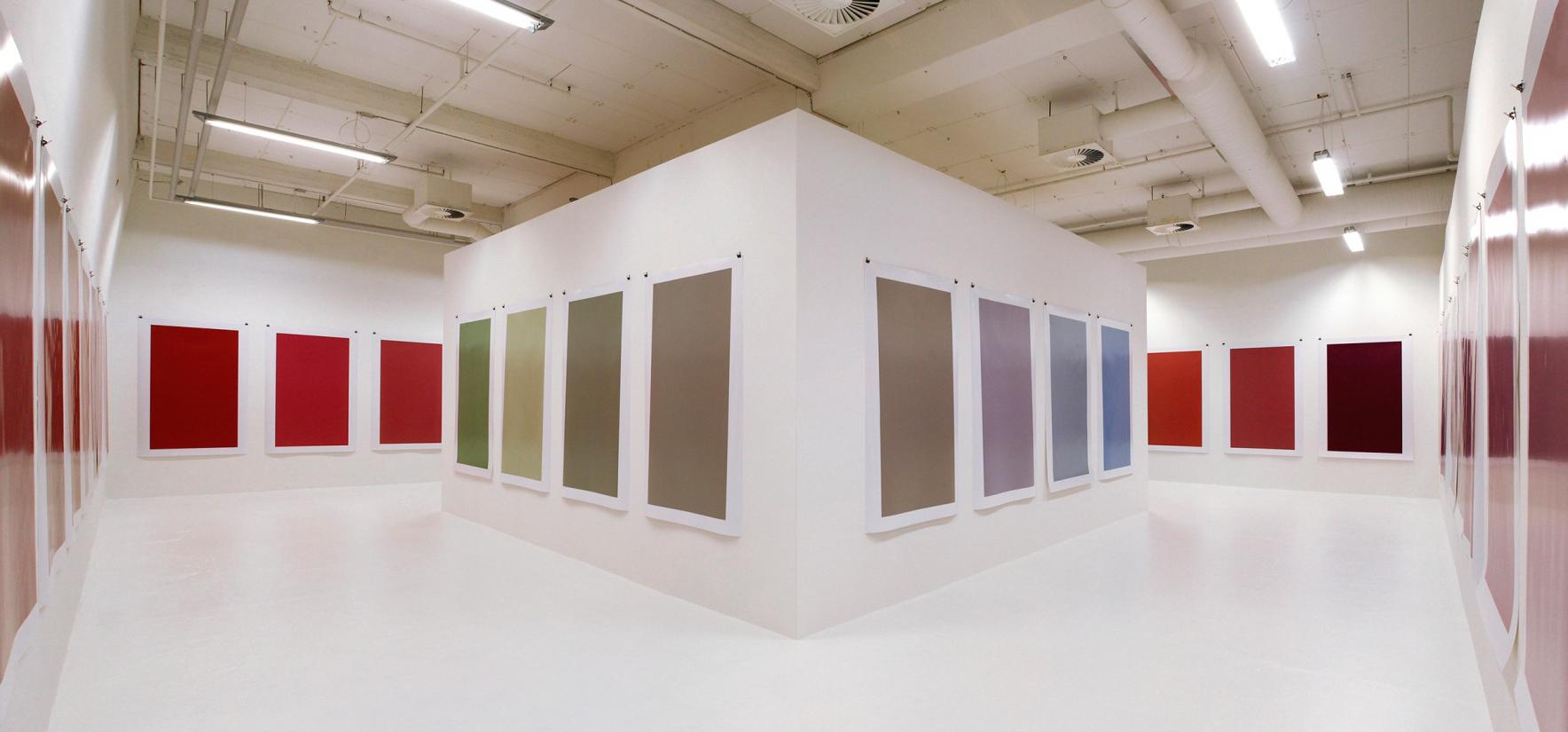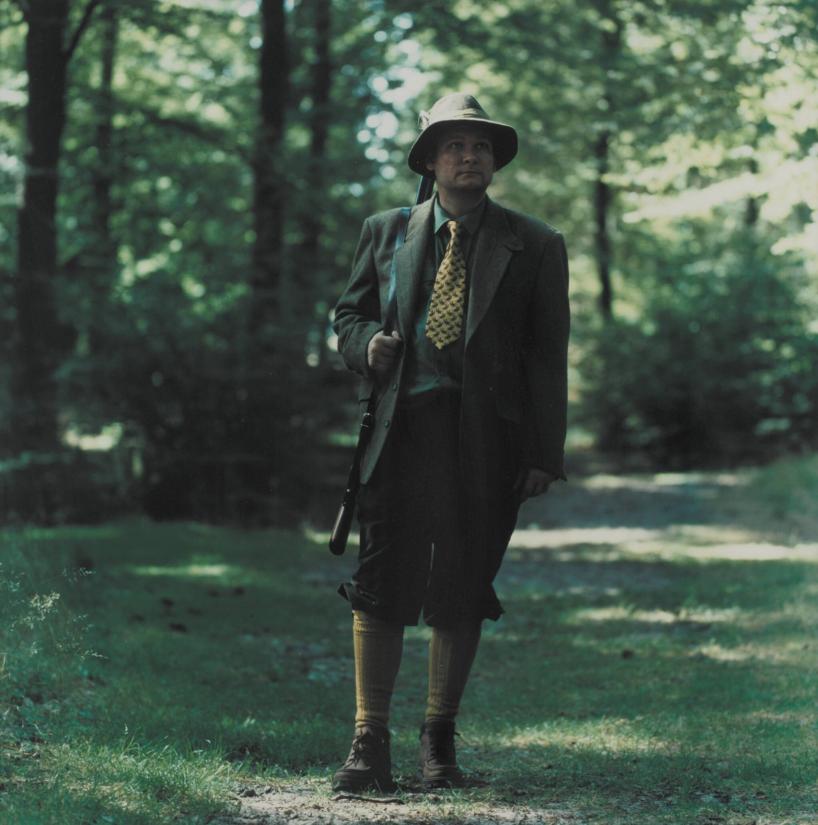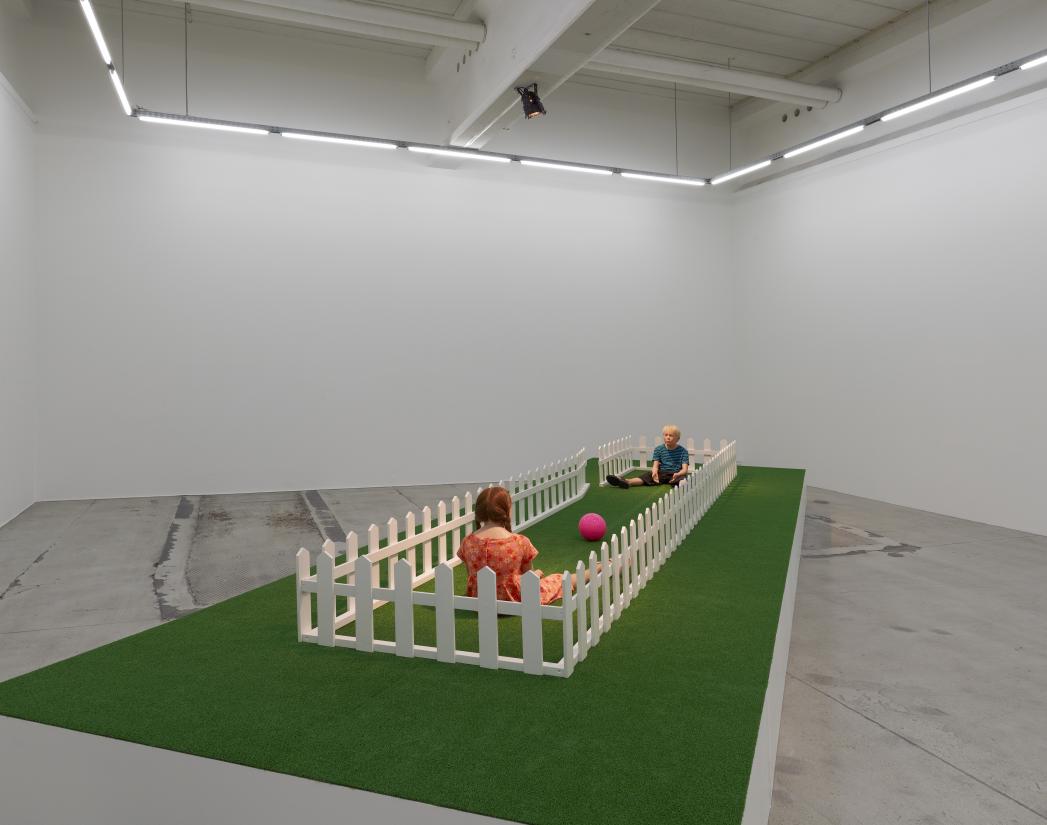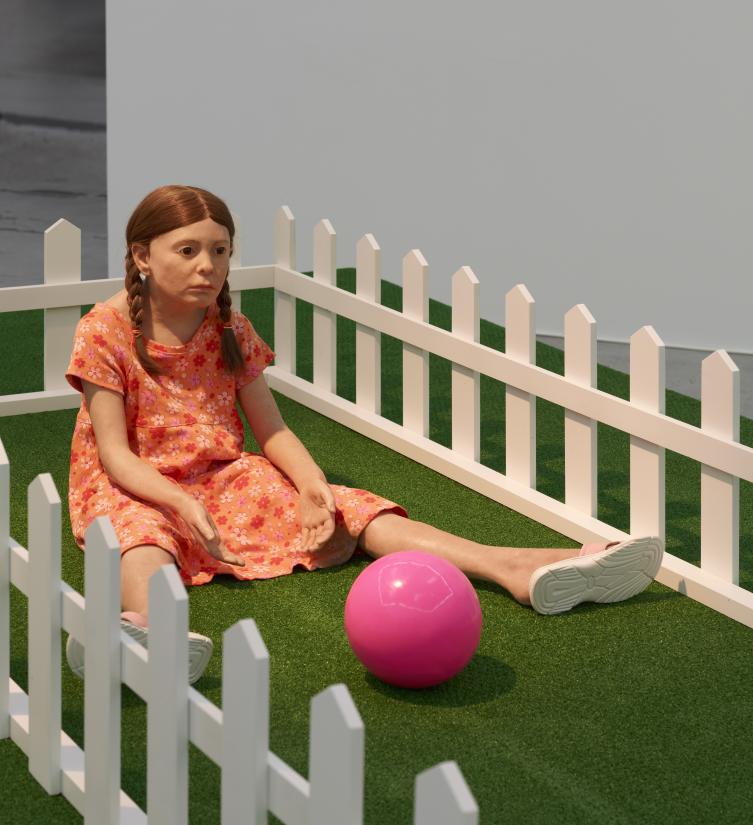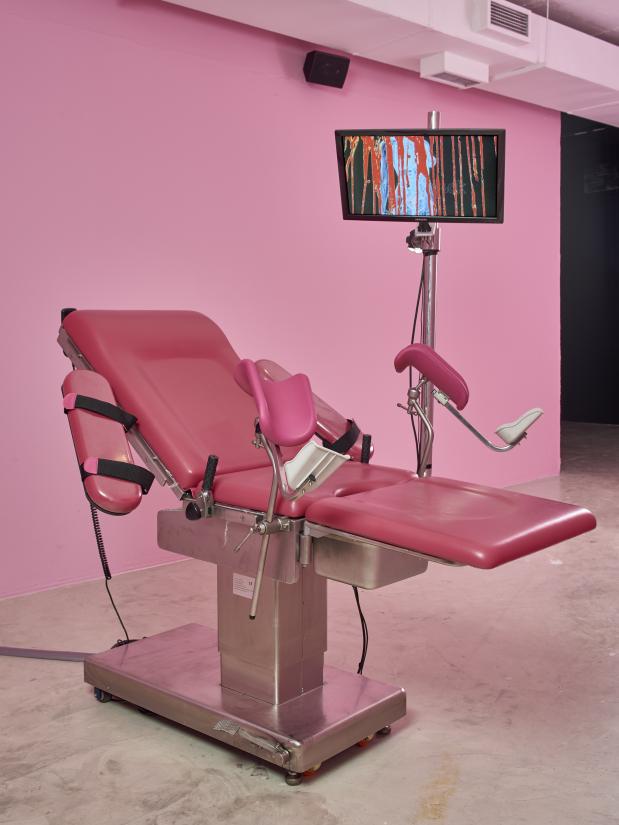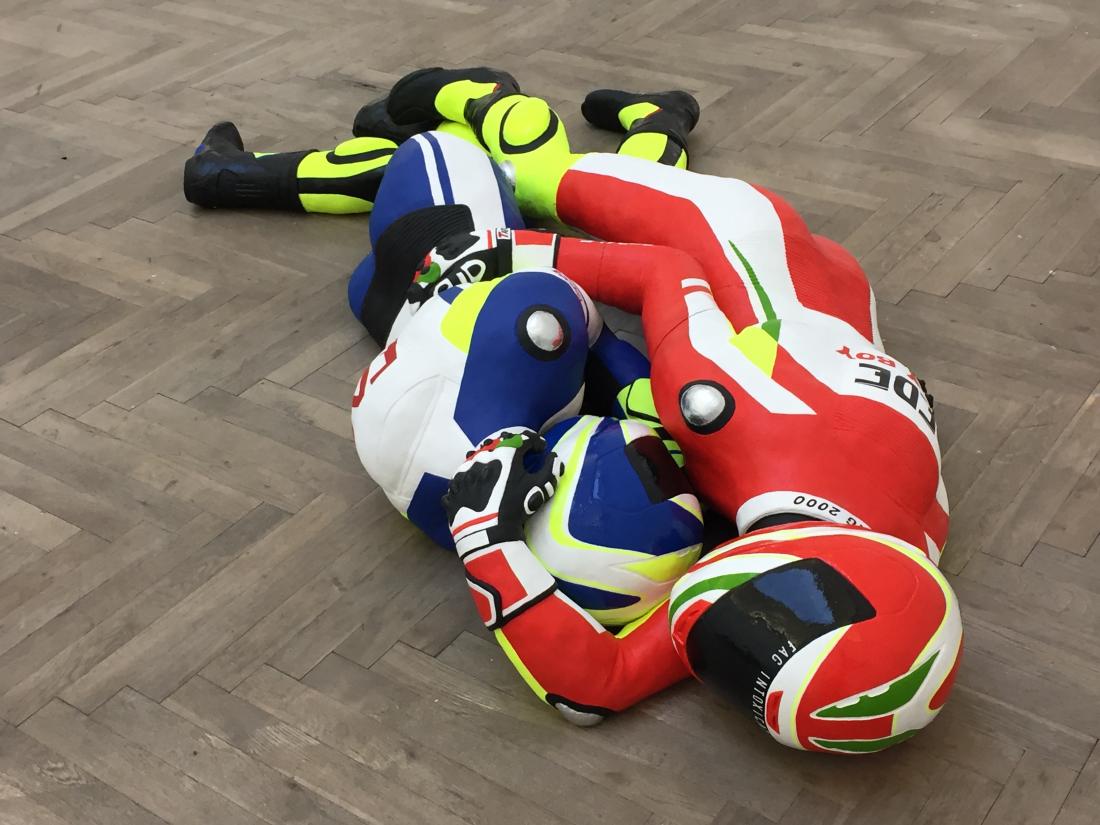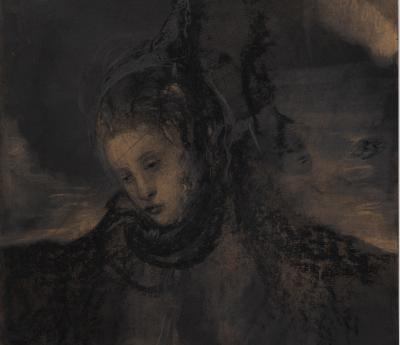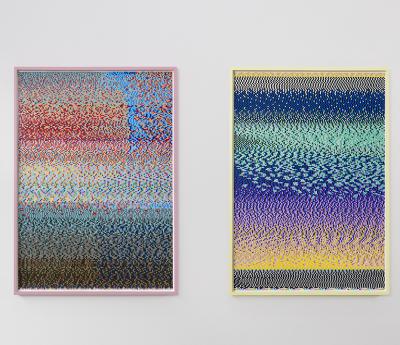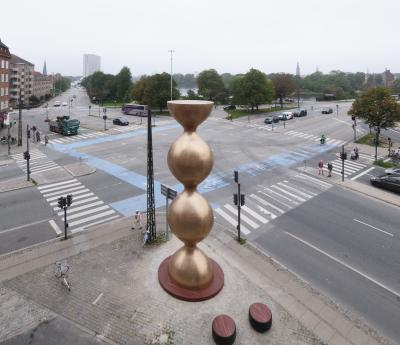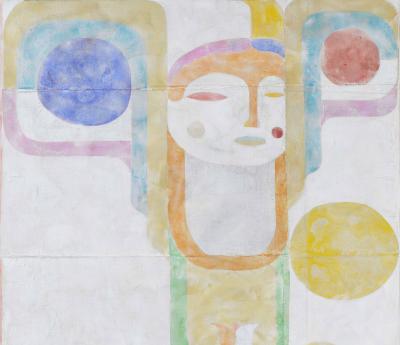Works by Nina Beier & Bob Kil, Louka Anargyros, BURN OUT (Henrik Plenge and Jes Brinch), Ismar Čirkinagić, Simone Aaberg Kærn, Peter Land, Rasmus Myrup, Tabita Rezaire, Apolonia Sokol, Jakob Kudsk Steensen and SUPERFLEX have been added to Arken’s collection.
Focusing on the collection
The donation of 20 works marks a new development in Arken’s collection and reflects the museum’s new strategic focus on its permanent collection. This new focus is underscored by the inclusion of the many donated works in the 2024 exhibition Group Therapy – New Contemporary Art.
Under this new strategy, Arken will follow selected artists aiming to represent their artistic practice more broadly. In addition, the museum will expand its collection of works created from 1990 to 2010 in order to enhance the depth and diversity of art from this period. The museum will also add works by new contemporary artists in order to secure the collection’s representation of new expressions and ideas for the future.
These ambitions are reflected in the 20 artworks that Arken has now acquired thanks to a donation from the New Carlsberg Foundation.
Apolonia Sokol
The Danish-French-Polish artist Apolonia Sokol (b. 1988) reached a wider Danish audience through Lea Glob’s documentary Apolonia, Apolonia, which follows the talented artist and the bohemian environment around her over a period of 13 years. Sokol’s unusual personality and diverse social circle are reflected in her intense portraits, which explore the power of images in the centralization of current political themes, such as intersectional feminism and body politics.
BURN OUT
Charred murals of ladybirds and a melting playground slide in primary colours are just some of the elements in the terrifying tableau that meets the audience in BURN OUT’s Brændt Børnehave (Burnt-Out Preschool) (1994/2024). The artist duo – Henrik Plenge Jakobsen (b. 1967) and Jens Brinch (b. 1969) – recreates the piece at Arken sing both replicas and elements from the original installation at Galleri Nicolai Wallner in 1994.
Ismar Čirkinagić
The Bosnian-Danish artist Ismar Čirkinagić (b. 1973) graduated from the Royal Danish Academy of Fine Arts after fleeing the war in Bosnia-Herzegovina in 1992. In his artistic practice, he explores themes related to trauma, exile and national identity through conceptual projects. In his photo project Ocean Europe, Čirkinagić replaces the symbolic values of European flags with monochrome colour expressions by computer-manipulating photos of flags downloaded from the Internet until each photograph only consists of a single colour that is the average of all the colour shades of the original flag.
Jakob Kudsk Steensen
With the immersive VR and video installation Re-Animated from 2018, Jakob Kudsk Steensen (b. 1987) digitally revives the extinct Kaua’i ʻōʻō bird and examines the feelings evoked by the loss of biodiversity resulting from human activity. Kudsk-Steensens rtistic practice revolves mainly around storytelling through animation and sound. In immersive installations, he highlights climate issues.
Louka Anargyros
Louka Anargyros’s (b. 1992) huge ceramic sculptures Leatherboys portray masculine figures in motorcycle gear locked in tender embraces. To Anargyros, the dangerous sport of motorcycle racing symbolizes a tough and dangerous form of masculinity – dangerous to its proponents as well as to those who fail to live up to it. On the leather clothing, the artist has replaced the names of racing sponsors with some of the homophobic nicknames hurled at him in his youth because he failed to live up to stereotypes of being ‘a real man’.
Nina Beier and Bob Kil
The performative artwork Life Guardians is a collaboration between artists Nina Beier (b. 1975) and Bob Kil (b. 1975). In continuation of Beier’s use of ready-mades, it involves five marble lions accompanied by five actors performing a choreography cretaed by Kil. The piece takes a humorous but critical look at the power structures around us and explores how we experience the relationship between object and image. Nina Beier is already represented in Arken’s collection, but this is the first artwork by Bob Kil as well as the first performative artwork in the collection.
Peter Land
Peter Land’s (b. 1966) work includes videos, sculptures and installations, and he is already a central artist in Arken’s collection. He established himself as a pioneer of contemporary art in the 1990s when he began to experiment with video art, which was a new medium at the time, and explored topics related to gender and identity politics. His video installation The Lake (1999) continues Land’s years-long studies of masculinity and his use of the video medium, while the hyper-realistic installation Playground (2005) represents Land’s use of sculpture, installation and hyper-realistic absurdity.
Rasmus Myrup
Outside Salon de Refusés consists of seven sculptures with names such as Lantern Lad and That Bitch, all made of natural materials and dressed in tailor-made clothes that express their individual personalities. These mythological and magical creatures are queuing to get into a nightclub that would never allow us mere mortals in. With a unique approach to historical power critique and use of queer narratives, Rasmus Myrup (b. 1991) usually incorporates references to Nordic cultural history and the power structures that myths and mythological figures sometimes help to perpetuate.
Simone Aaberg Kærn
Simone Aaberg Kærns (b. 1969) Open Sky is a monumental installation based on her performance Microglobal from 2002, when she flew all the way from Denmark to Kabul, Afghanistan, in a Piper Colt aeroplane to teach an Afghan woman to fly. The installation documents Kærn’s groundbreaking performance and includes the Piper Colt, among other elements. It is one of several examples of Kærn’s use of the airspace as a symbol of freedom and the transformation of physical boundaries from the 1990s to the present day. Open Sky is a principal work in the artist’s practice.
SUPERFLEX
With It Is Not The End Of The World, the artist group SUPERFLEX takes a phrase that is often used to dismiss the urgency of global climate change and literally bends it in neon. The piece also underscores the point that even if humanity perishes, the planet will survive. SUPERFLEX was established in 1993 by the artists Bjørnstjerne Christiansen, Rasmus Nielsen and Jakob Fenger. The group uses the expressive medium of art to make a difference in society, connecting their artistic output with political activism.
Tabita Rezaire
Tabita Rezaire’s (b. 1989) multimodal Sugar Walls Teardom (2016) consists of a gynaecological chair upholstered in pink leather and a video that is connected to the chair by a mechanical arm. The piece explores the huge contributions Black women have made to the development of modern medical science and technology through colonizers’ exploitation and experiments during slavery. Rezaire works with video and digital art, treating the body as a technological medium to address understandings and conceptualizations of race, intersectional politics and Afro-feminism, among other topics.
